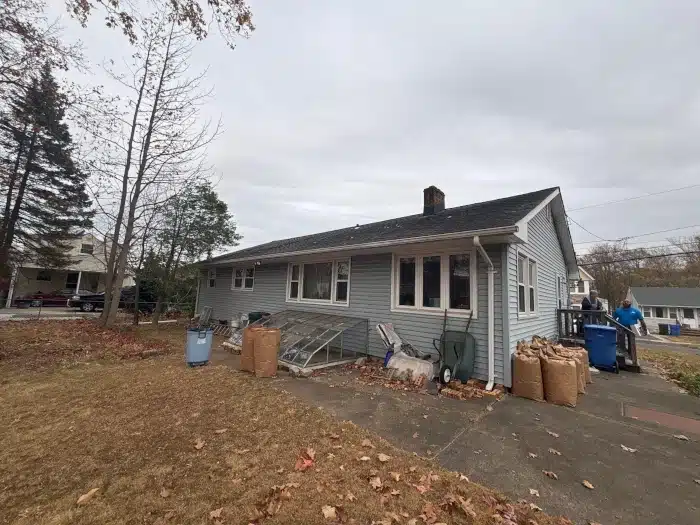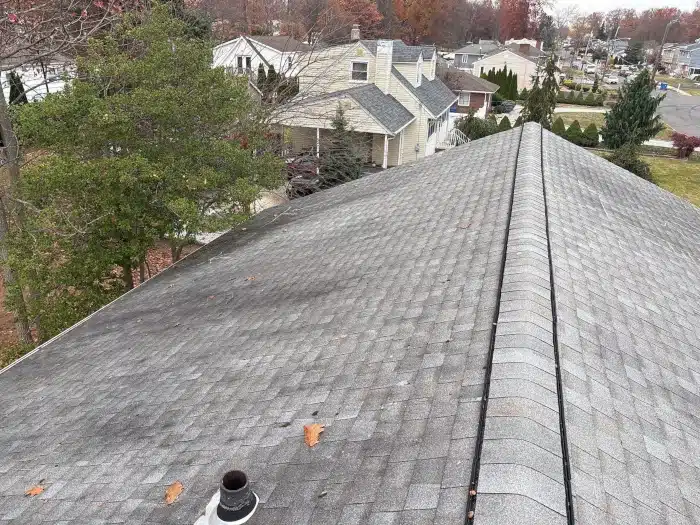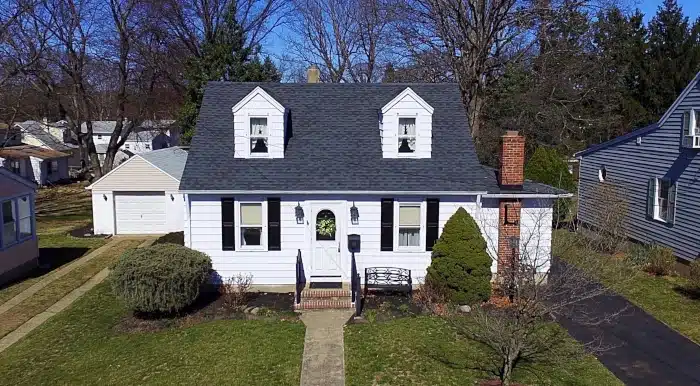Key Highlights
- A leaking roof is a major problem, but even a roof in good condition might need replacing based on several factors.
- Regular roof maintenance can extend your roof’s lifespan but can’t entirely prevent eventual replacement.
- This comprehensive guide offers insights into the signs indicating when a roof replacement is necessary, even without visible leaks.
- Understanding different roofing materials and their lifespans is crucial when considering a replacement.
- Proactive inspections and addressing issues early can prevent costly damage down the line and give you peace of mind.
- Choosing a reputable roofing contractor is as important as selecting the right roofing material for your needs.
Introduction
As a homeowner, you know that replacing a roof can cost a lot. Most of the time, people decide to replace their roof when there is a leak. But what if your roof isn’t leaking now? Should you wait for a leak to happen, or is it wise to change a roof that seems fine? This guide will help answer those questions. It will share useful information about roof replacement and help you make smart choices about the most important protection for your home.
Understanding the Importance of Roof Maintenance

Your roof faces many elements like rain, wind, sun, and snow. These can cause damage over time. Regular care, such as getting professional inspections, making timely repairs, and ensuring proper ventilation, can help your roof last longer. This way, it can keep doing its main job: protecting your home.
Still, even with careful upkeep, every roof has a limited lifespan. It’s important to recognize the signs of an aging roof. Doing this can help you avoid costly damage and surprises in the future.
Extending Your Roof’s Lifespan Through Regular Care
Think of roof maintenance like taking care of a car. Regular checks can help avoid big problems later. It’s important to have yearly roof inspections, especially if your roof is more than 15 years old.
In these inspections, roofing contractors look at the condition of your shingles, flashing, gutters, and the whole roof. They search for signs of damage, wear, and possible weak spots. They will then suggest needed repairs or ways to prevent issues. Fixing these small problems quickly can greatly increase the lifespan of a roof. This protects your investment and keeps your home safe from the weather.
Identifying Hidden Damages That Could Lead to Future Leaks
Sometimes, big problems are hard to see. A leaking roof is an obvious issue, but there can be hidden damages long before you notice a drop on your ceiling. This is why having professional roof inspections is important.
Inspectors are skilled in spotting small signs of damage. They can find missing shingles in hard-to-reach spots. They also check for curling or cracked shingles, which show that the roof is old. Damage to the flashing around vents and chimneys is also important to watch. This damage can cause leaks.
If you don’t fix these hidden problems, they can get worse fast. This can lead to water damage, mold growth, and expensive repairs. So, it is important to find and fix these hidden damages early to stop bigger problems in the future.
Signs That Suggest Your Roof May Need Replacement

While active leaks are easy to spot, there are other signs that show your roof might be close to its end of its life, even if you don’t see any water damage. It’s smart to know these signs. This way, you can prepare for a replacement before any issues arise, which can help you avoid stress and damage from a sudden roof collapse. Let’s explore these indicators. They can include wear and tear from age as well as clearer signs of deterioration.
Age-Related Wear and Tear Indicators
Just like any part of your home, age can wear down your roof. Even if your roof is not leaking, you should think about replacing it if it’s getting close to its expected lifespan. For asphalt shingles, this is often around 20-30 years.
An aging roof can be more easily harmed by weather conditions. This increases the chance of leaks developing over time. Look for warnings like curling or cracking shingles, missing granules in the gutters, or a faded color on your roof. These signs can show that your roof may need to be replaced soon.
Visual Signs of Deterioration on Your Roof
Look out for clear signs that mean it might be time to replace your roof. Here are some things to check:
- Granule Loss: If you see many granules (the small, protective bits on asphalt shingles) in your gutters or near downspouts, your roof is worn out.
- Discoloration or Staining: Big areas that are discolored, dark streaks, or moss can show that moisture is trapped. This may mean your shingles are breaking down.
- Missing or Damaged Shingles: Shingles can be missing or damaged from storms or regular wear. This makes your roof open to leaks and needs quick fixing.
If you find any of these issues, you should talk to a good roofing contractor for a professional check.
The Impact of Delaying Roof Replacement
It’s easy to think about waiting to replace your roof, especially if you don’t see any leaks right now. But putting this important investment off can lead to bigger problems and higher costs later on.
Keep in mind that what looks like a small problem today—like a few missing shingles or some discoloration—can become a serious issue due to severe weather or over time. Replacing your roof before it gets worse helps keep your home safe and can save you from dangerous and expensive repairs.
Increased Costs from Secondary Damages
Delaying roof replacement can cause more problems and cost you more money. A small leak that you do not fix can get into your home’s structure. This can lead to rotted wood, damaged insulation, and even mold.
These problems not only need expensive repairs but can also make your home less energy efficient. This can result in higher energy bills. What should be a simple roof replacement may turn into a bigger and costlier renovation. This can affect your finances and disrupt your daily life.
Risks to Home Safety and Comfort
A bad roof can create serious risks for your home’s safety and comfort, not just money issues. An aging roof can easily be damaged by severe weather, putting your family and belongings in danger. Leaks can make floors slippery, leading to falls. Moreover, water damage can cause mold to grow, which can worsen breathing problems and lower indoor air quality.
Fixing roof problems early helps keep your home safe and comfortable. It’s a better idea to replace an old roof before issues start. This way, you can have peace of mind and protect what is most important to you.
Conclusion
Delaying roof replacement can make it more expensive and put your home at risk. Look for signs such as age-related wear, visible damage, or hidden problems to stop future leaks. Regular maintenance can help your roof last longer. To keep your home comfortable and prevent more damage, think about replacing your roof on time when needed. It’s a good idea to schedule a check-up to look at your roof’s condition and see the long-term benefits of keeping up with maintenance. Your home’s safety and how long your roof lasts depend on how well you take care of it.
Frequently Asked Questions
How can I tell if my roof needs to be replaced before it starts leaking?
Missing shingles, damaged flashing, curled shingles, granules in your gutters, and water stains in your attic can show you might have roof damage. Even if you don’t see active leaks, these signs could mean you need a new roof.
What are the long-term benefits of replacing a roof that isn’t leaking?
Replacing your roof early can help your home look better. It can also raise the value of your home. You might save on energy bills too. Plus, it gives you peace of mind.
How often should I have my roof inspected to prevent unexpected leaks?
To keep your roof in good condition, you should have it checked by roofing experts every year. This is especially important if your roof is older. Regular care helps to stop unexpected leaks and can make your roof last longer. For more expert advice, explore these roofing maintenance and replacement tips from ARMA.






